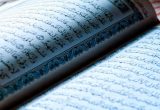The Musa Sabi Lecture Series
The Musa Sabi Chair Lecture Series was created by the inaugural Musa Sabi Chair (2004-2009), with the aim of promoting ancient Iranian Studies, through lectures and symposia, whose proceedings would be published either as occasional papers (lectures), or edited volumes (edited volumes). Hitherto the following international symposia were organized by the Musa Sabi Chairs (2004-2009) and (2009-2014):
-

How much of a Physician was Rashīd al-Dīn?
Judith Pfeiffer. October 18, 2017.Rashīd al-Dīn Faḍl Allāh Hamadānī (d. 718/1318) is often introduced as “ṭabīb,” or ‘physician,’ mostly to distinguish him from authors with similar names, notably the epistolographer Rashīd al-Dīn Waṭwāṭ (d. 578/1182). This paper discusses Rashīd al-Dīn’s scholarly persona as a physician.
-

The Anatomy of Loyalty and Patterns of Patronage in the Religio-political Culture of Sixteenth Century Iran
Hani Khafipour. March 8, 2017.Dr. Khafipour discusses the spiritual dimensions of political loyalty that was instrumental in the formation of strong ties between the Safavid rulers and their chiefs at the epicenter of the order, where power was continually contested.
-

Western Iran in the Third Millennium BCE: The Early Trans-Caucasian Phenomenon Seen from Yanik Tepe
Geoffrey Summers. January 25, 2017.The Early Trans-Caucasian (ETC), otherwise known as Kura–Araxes, Karaz, and Khirbet Kerak, spanned the later part of the fourth and the entire third millennia BCE.
-

New Methods in the Study of the Qur’an
Behnam Sadeghi. November 28, 2016.The date and provenance of the Qur’an, as with all the literary sources for early Islamic history, have been the subject of scholarly disagreement for decades.
-

Performing Pamiri Identity in Central Asia
Gabrielle van den Berg. October 31, 2016.The Pamir mountain range straddling the border between China, Tajikistan and Afghanistan lent its name to a specific group of Eastern Iranian languages, the Pamir languages.
-

Celebrating the Ghaznavids: Representations of Court Culture in Medieval Persian Poetry
Gabrielle van den Berg. October 26, 2016.The first substantial amount of classical Persian poetry dates from the 11th century. A large part of this poetry has been composed for the Ghaznavid dynasty (11th-12th century), who ruled semi-independently over large territories of the eastern caliphate.
-

Ancient China in Comparative Perspective: An Afternoon of Papers in Honor of Professor Li Ling
Rahim Shayegan. October 10, 2016.Professor Li Ling is a towering figure in the study of classical Chinese civilization today. Born in Xingtai (Hebei province) in 1948, he has been on the faculty of the Department of Chinese Literature at Peking University since 1985.
-

Dynamics of Continuity and Creativity: Models of Change in Persian Poetry, Classical and Modern
Ahmad Karimi-Hakkak. May 11, 2016.Persian poetry, an aesthetic system now over 1100 years old, has gone through a series of changes. Emerging in the steppes of Central Asia through the late-ninth and tenth centuries CE.
-

The Achaemenids and the Imperial Signature: Persepolis – Arachosia – Bactria
Wouter Henkelman. April 29, 2016.The Achaemenid Empire (c. 550–330 BCE) defined itself through a set of ideological values that were reflected in royal inscriptions, court stories, and practices that were probably observed by the Persian nobility.
-

Procopius and the Persians: History, Fable or Morality Tale?
Geoffrey Greatrex. April 13, 2016.The lecture will discuss the historian Procopius of Caesarea (c. A.D. 500-560) and his account of the wars waged by Justinian, particularly those fought in the East against the Sasanian Persians.
-

Not All of the Poets Went to India: Literary Culture in Iran under Safavid Rule
Paul Losenksy, Indiana University. March 10, 2016.The great migration of poets from Iran to India typically dominates modern accounts of the history of Persian poetry in the 16th and 17th centuries.
-

Religious Institutions as Instruments of Achaemenid Rule in Egypt
Henry Colburn, Getty Research Institute. February 23, 2016.This talk examines some of the roles played by Egyptian temples in the implementation and maintenance of Achaemenid Persian rule in Egypt, c. 526-404 BCE, through two case studies.
-

Ubayd-i Zakani’s Counterhegemonic Poetics: Providing a Literary Context for the Ghazals of Hafiz
Dominic Parviz Brookshaw, University of Oxford. February 12, 2016.For far too long, the ghazals (short lyric poems) of Hafiz (d. ca 1390) have been discussed in isolation from those of his contemporaries.
-

Recent Investigations on Late Sasanian Art: The Site of Taq-e Bustan
Matteo Compareti, UC Berkeley. January 27, 2016.The late Sasanian rock reliefs at Taq-e Bustan do not have any parallel in pre-Islamic Persian art.
-

The Construction of History: Case Studies in Achaemenid History
Maria Brosius, University of Toronto. January 13, 2016.The lecture will examine major questions in Achaemenid research, focusing, on the one hand, on the influence of scholarship in emphasizing (or neglecting) key issues in Greek-Persian relations, and, on the other hand, on the re-use of historical (Achaemenid) motifs in the Bible.
-

Glyptic Imagery and the Mechanics of Empire: Case Studies from Achaemenid Persia
Mark Garrison, Trinity University. October 26, 2012. -

Seals and Sealings from Jiroft, Iran: New Light on the Links Between Iran and Mesopotamia in the Third Millenium B.C.
Holly Pittman, University of Pennsylvania. October 22, 2012 -

Right Good Men? The Median Palace at Godin Tepe
Hilary Gopnik, Emory University. May 29, 2012. -

King and Kingship in Sasanian Iran; and Kawad I, Khusro I, and the Mazdakites: A New Proposal
Josef Wiesehöfer, Christian-Albrechts University of Kiel (Germany). October 10, 2010. -

The Persepolis Fortification Tablets: What They Are, What They’re Good For, What They’re Worth
Matthew W. Stolper, Oriental Institute, University of Chicago. April 18, 2007.

